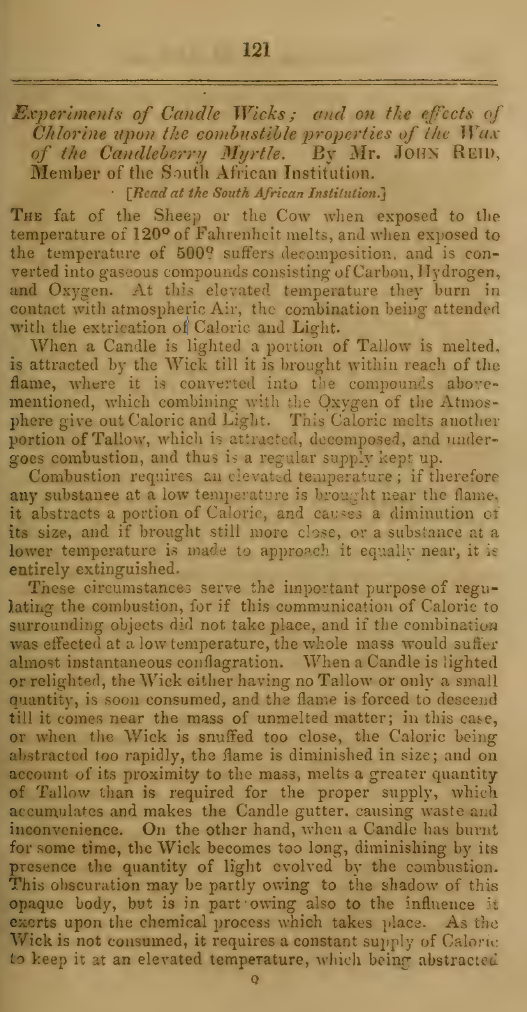Experiments of candle wicks
and on the effects of chlorine upon the combustible properties of the wax of the candleberry myrtle
DOI:
https://doi.org/10.21504/saqj.12.2632Keywords:
Combustion, Candle wicks, Candleberry Myrtle, Myrica, Wax bleacing, Clorine gas, Candle manufacturing, Fuel efficiencyAbstract
This paper presents a series of experiments conducted by Mr John Reid on the combustion of candles, the design and performance of various wick types, and the chemical modification of wax derived from the Candleberry Myrtle (Myrica species). Reid investigates the relationship between wick thickness, length, and structure in relation to light intensity, fuel consumption, and flame stability. Through controlled comparative trials against a standard wax candle, he determines that flat or multi-wick designs can enhance illumination efficiency while reducing the need for frequent snuffing. The study extends to the analysis of Candleberry Myrtle wax, a natural material widely used in the Cape Colony, comparing its physical and burning properties to those of beeswax and tallow. Exposure to chlorine gas was found to bleach the wax, increasing its hardness and improving its burning characteristics. Reid concludes that bleached Candleberry Myrtle wax may serve as a cleaner, less odorous, and more stable alternative to tallow for candle manufacture, with potential advantages in certain climatic conditions.
Downloads

